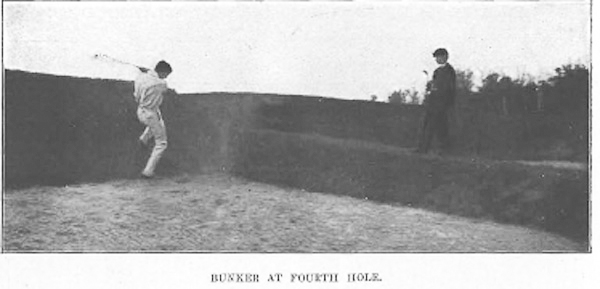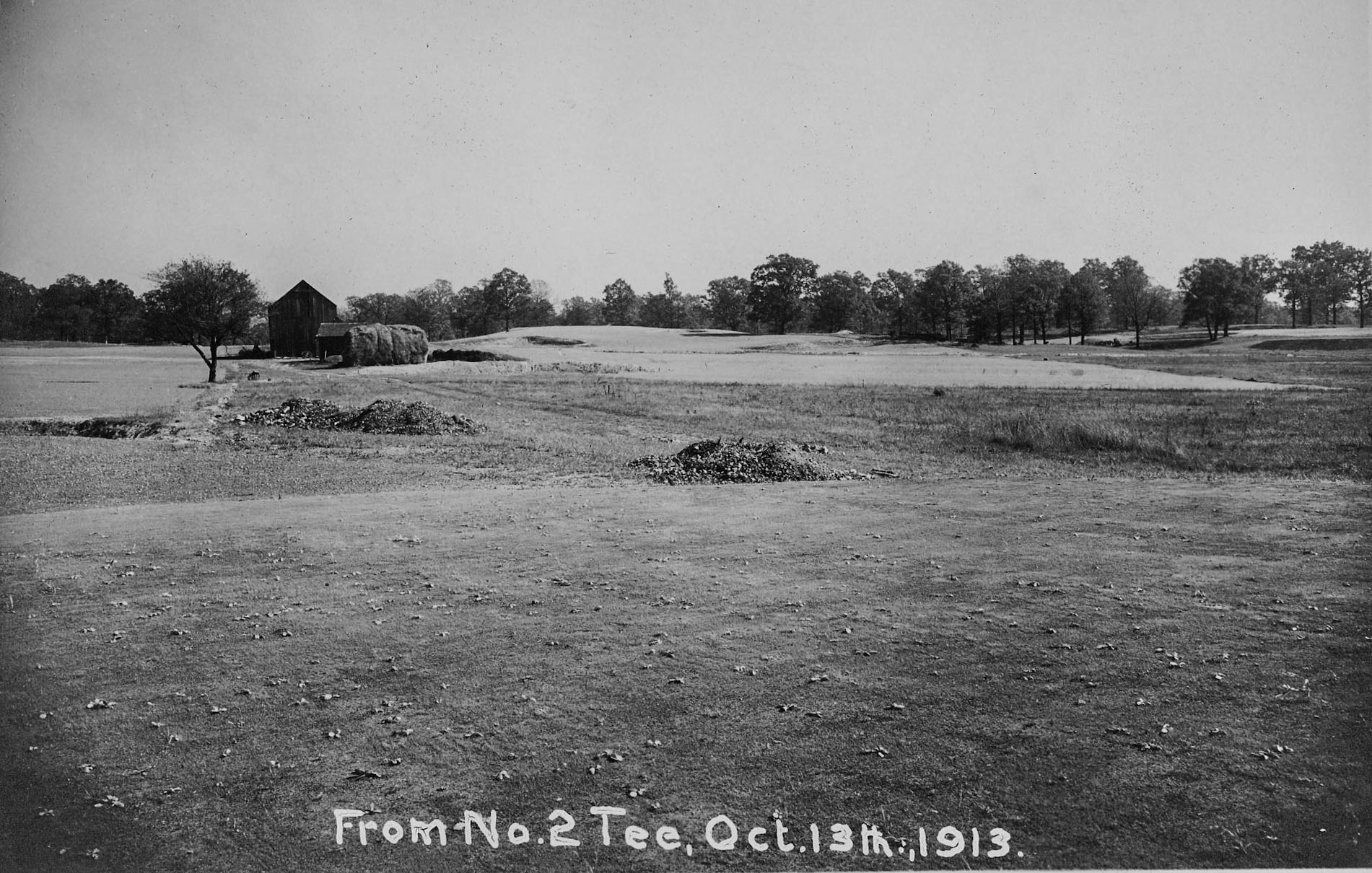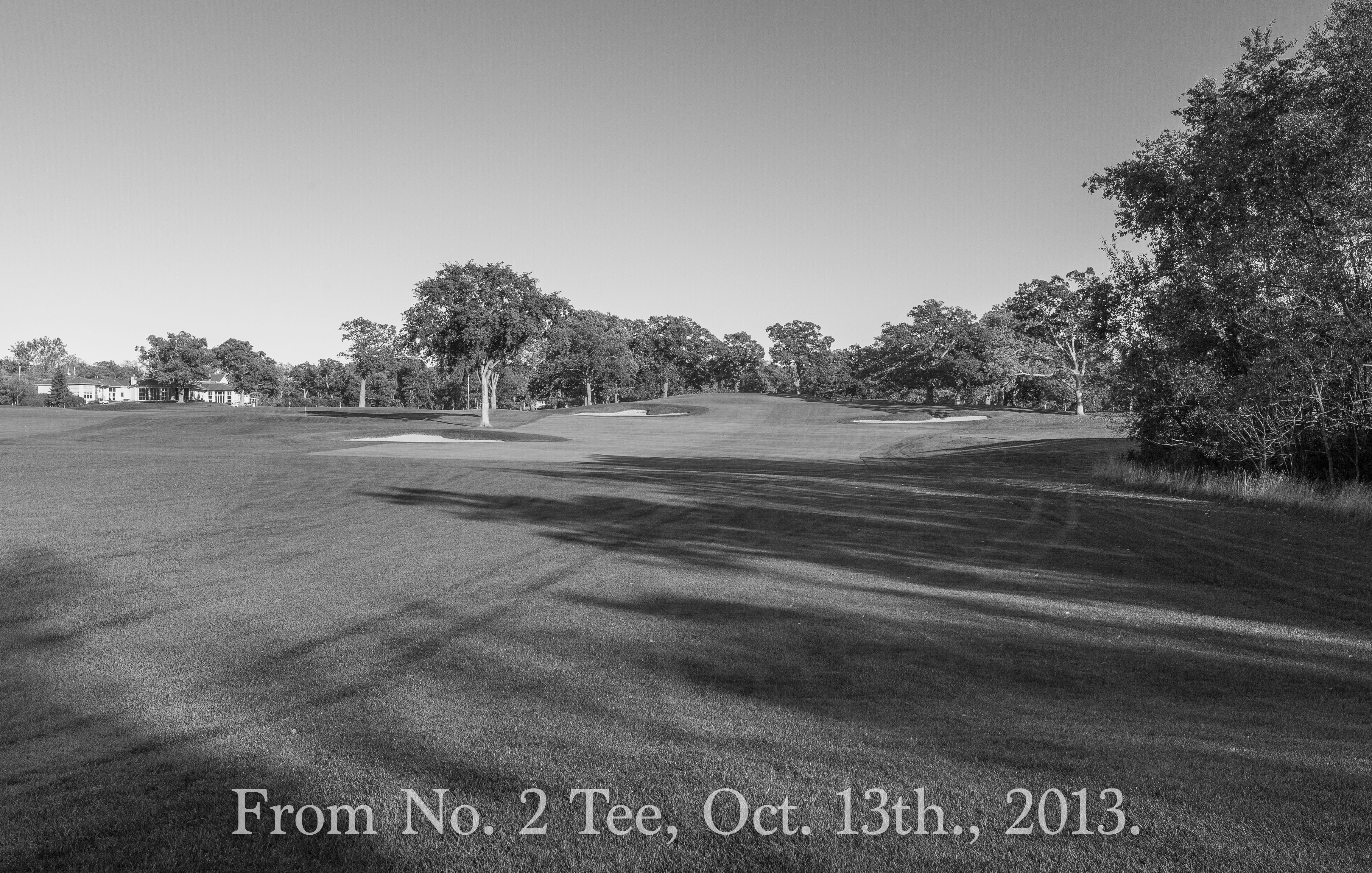I have been making significant progress on my book about golf course architecture in the Chicago area.
Part One and Two of the Book are drafted. Part One covers how golf arrived in Chicago, the earliest efforts to lay-out and build courses. Part Two starts with the design of America’s first championship 18 hole golf course by Charles Blair MacDonald at the Chicago Golf Club in 1895. The important contributions of Chicago’s golf course architecture pioneers the Foulis brothers, H.J. Whigham, W.A. Alexander, H.J. Tweedie and Tom Bendelow are covered through their work on Chicago’s first golf courses; Lake Zurich, Onwentsia, Exmoor, Glen View, Homewood (Flossmoor), Midlothian, Idlewild, Riverside, and many more.
Part Three which I’m working on now covers the arrival of the Golden Age of Golf Architecture in Chicago. Here the focus has shifted from the early Clubs to the new designs of the Golden Age with H. S. Colt and Donald Ross leading the way in 1913-1914. We’ll also explore the wonderful work of Chicago’s own William Langford as well as courses by Captain C.H. Alison, Harry Collis, Bill Diddel, William Flynn, George O’Neil, Willie Park, Jr., Seth Raynor, A.W. Tillinghast, William Watson and others. I am grateful that I have able to consult at Old Elm where the work of Colt and Ross was going to be a central part of the book in any event. I have been digging into the archives to learn as much as possible about how their historic collaboration worked and how they introduced the Golden Age of Golf Architecture to the fairways of Chicago.
Writing this book has been a long journey with several insightful trips along the way. Most of my time has been spent looking at old magazines and microfilm in library’s but here is the story of a wonderful 2016 research trip to Scotland.
In March, 2016 I visited Prestwick Golf Club, the birthplace of The Open Championship. There I played the first course laid-out by Old Tom Morris and was able to study what early architecture was like. The Cardinal bunker, the Alps hole and the wonderfully quirky undulations that Old Tom fully incorporated into the course that would give birth to The Open Championship. I visited Prestwick since it was the home of H.J. Whigham who was one of golf’s Chicago area pioneers, who after winning the US Amateur, designed the Onwentsia Club’s 18 hole course. He later married Charles Blair Macdonald’s daughter and helped MacDonald design the National Golf Links on Long Island.
After two days in Prestwick, I boarded the train right next to the Prestwick Clubhouse and minutes later could see the fairways of Royal Toon roll by as I travelled to St. Andrews via Edinburgh like Old Tom might have in the 1850’s when he returned to his home town to take over as custodian of the links. However, unlike Tom I had to grab a cab at Leuchers and couldn’t arrive by rail along the 16th and 17th holes of the Old Course. I arrived in time for a late bite to eat, and of course a wee nip of the national beverage before a walk home in the misty night air.
After a good night’s sleep, I donned my Royal Cinque Ports Golf Club bow tie and stepped out into a crisp, sunny March 31st morning and walked a few blocks to the R&A Clubhouse where I was meeting Roger McStravick, winner of the 2015 USGA Herbert Warren Wind Award for his wonderful book, “In the Footsteps of Old Tom Morris.” Just outside the front doors, we met historian David Hamilton, an R&A member who graciously provided us with a guided tour of the Clubhouse where I was able too see some of the original early maps of the Old Course from the 1800’s among many other golf history treasures. Our tour culminated with coffee in the bay of windows overlooking the first tee of the Old Course. There we were joined by Peter Lewis, long-time R&A historian and expert on the evolution of the Old Course and we all a lovely conversation about the history of golf architecture, the Old Course, Old Tom and what St. Andrews and the Old Course were like when sixteen year old Charles Blair MacDonald visited in 1872. And we also discussed Peter’s love of baseball and my hopes for the end to the Chicago Cubs World Series drought. What a day so far, but it was only 11 am so off to the British Golf Museum where I could buy a copy of Peter’s new book “Why Eighteen Holes.”
By 1 pm it was turning out to be a beautiful afternoon, calm and warm for that time of year, so I hustled off to the starter to see if I might be able to play my first round ever on the Old Course. Yes, he said we have an opening in 30 minutes. “Do you have your clubs,” he asked eyeing my sport coat and tie, “we can’t give you a slot unless you have your clubs?” No, but I can be back in 10 minutes ready to go. So off I ran 2 blocks back to my B&B to change my clothes and grab my clubs. I made it back in time and paid my fee, and before I could take 10 swings to loosen up, I was on the tee just 10 yards from where I had coffee that morning. And it was magical. No need to recount the details, but I parred the 17th after a hybrid approach to 25 feet and dropped a 15′ putt for birdie on 18 to shoot 1 under par. The scotch that night was peaty and warm.
The next day I visited the starter again at 6:30 and snagged the first tee time of the day at 7:00am. It was clear and the sun was just rising behind the R&A as I checked in, but by the time 7:00 am arrived the clouds had rolled in off the sea and it was about 10 degrees colder and the winds were blowing 10 mph harder then the day before: and coincidentally my score was about 1 shot higher for each degree difference. So lovely and calm at first glance, I began to realize what centuries of golfers have come know, that there is so much depth of character and mystery to the Old Course that you can barely begin to understand what all the fuss is about with a single loop around the crook of the Old Course.
That afternoon I met Roger and we went to see Michael Tobert, another of St Andrew’s wonderful authors, who signed my copy of his book “Pilgrims in the Rough: St. Andrews Beyond the 19th Hole.” Hearing about my charmed round the day before he inscribed my gift copy “To Dan: May you Never shoot 71 on the Old Course again!” Then off to the St Andrews Preservation Trust where I looked through their photo collection for my book. Later I toured the cemetery to find Old and Young Tom’s graves and went on a search for the St. Andrews home of Godfrey MacDonald where CBM stayed during his school years in the 1870’s. More about that in the book. I topped off the day with many a night cap at the pub in the Dunvegan Hotel where I met Old Tom himself in the form of David Joy of Titleist fame.
After several long days and now into the 11th day of the trip I welcomed a chance to sleep late on Saturday morning but did manage to slip in another round on the Old Course that afternoon. Sunday I met up with a local I had met at Dunvegan on Friday night and we played Old Tom’s New Course for a change of pace. I was tired and so was my game, but what a delight as the rains let up after the first hole and we even got a little peek of sun. I can see why many of the locals prefer the New to the Old. With the Old Course getting rest from the tourists feet and turf cutters on Sundays, I enjoyed the opportunity to roam the Old Course in reverse as Macdonald would have played it in the 1870’s. Many bunkers that made no sense over three rounds now had their purpose in life revealed. The Eden hole in particular stood out and must have been a beast as a par 4 approached from the left over the hill bunker. A few photos have been posted in photos of 2016 section.
With that meandering trek around the Old Course, my sojourn to the birthplace and home of golf was over, but not without a vow to return next year with some friends in tow and the promise of a match with Roger and some new friends from the St. Andrews Golf Club.
I learned a lot and only have begun to appreciate the charms of St. Andrew’s, charms which so enamored Charles Blair MacDonald with a love of golf and appreciation for the spirit of the game as it has always been played in St Andrew’s, that he spent his entire life introducing the game to Chicago and the United States while making enormous contributions to the art of golf course architecture as Chicago’s first golf course architect and also as the architect who introduced the principles of the Golden Age of Architecture to the US through his creation of the National Golf Links on Long Island.
Hopefully, with the help of some insights picked up on my trip I can tell my story with half the skill and knowledge, and some of the charm of the authors I met on my trip. If I can accomplish that, I should be able to play to my handicap.
Fairlawn: Chicago’s First Golf Course (1892) on Sen. Farwell’s estate in Lake Forest
Onwentsia Club Lake Forest






